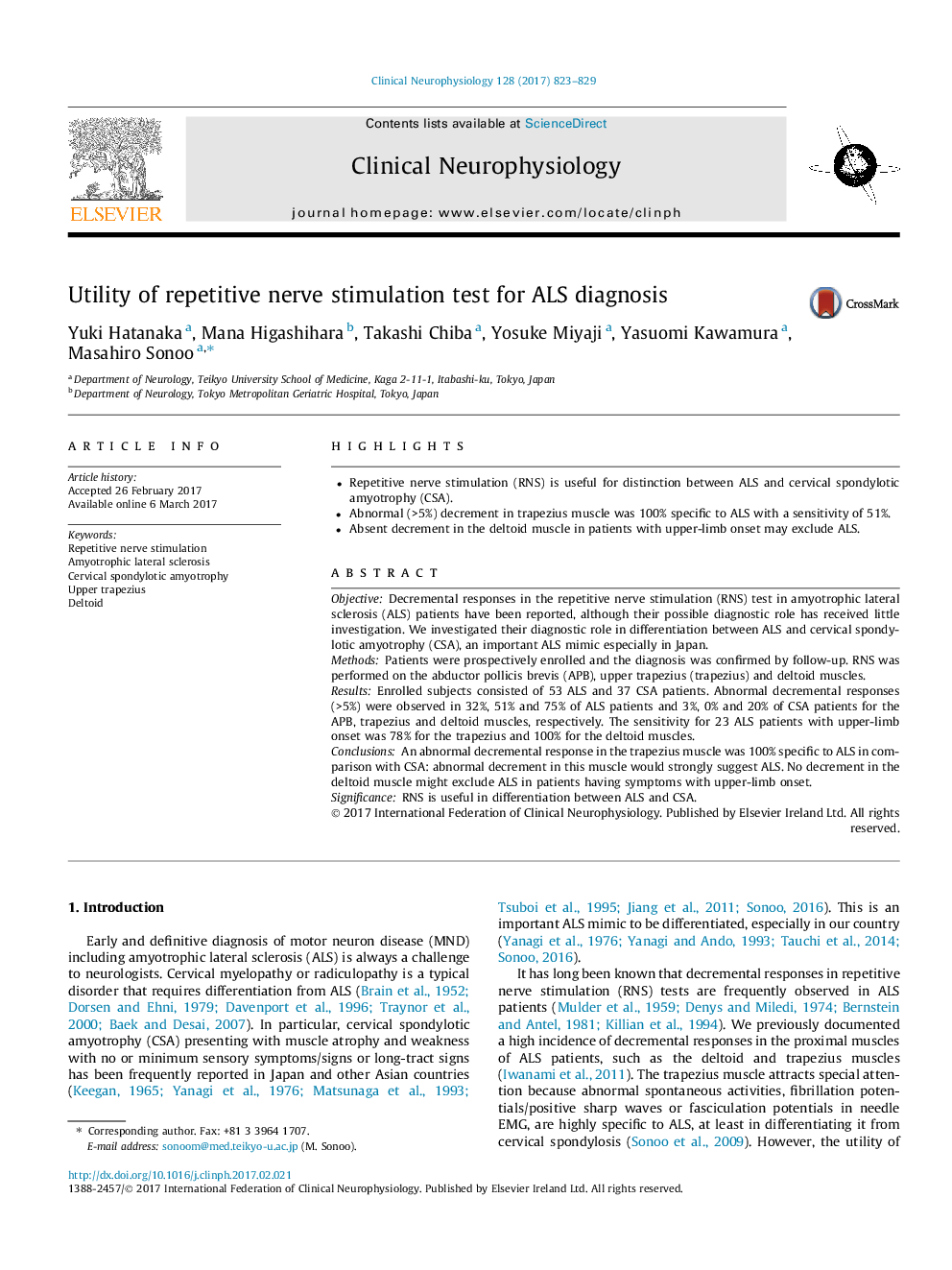| Article ID | Journal | Published Year | Pages | File Type |
|---|---|---|---|---|
| 5627676 | Clinical Neurophysiology | 2017 | 7 Pages |
â¢Repetitive nerve stimulation (RNS) is useful for distinction between ALS and cervical spondylotic amyotrophy (CSA).â¢Abnormal (>5%) decrement in trapezius muscle was 100% specific to ALS with a sensitivity of 51%.â¢Absent decrement in the deltoid muscle in patients with upper-limb onset may exclude ALS.
ObjectiveDecremental responses in the repetitive nerve stimulation (RNS) test in amyotrophic lateral sclerosis (ALS) patients have been reported, although their possible diagnostic role has received little investigation. We investigated their diagnostic role in differentiation between ALS and cervical spondylotic amyotrophy (CSA), an important ALS mimic especially in Japan.MethodsPatients were prospectively enrolled and the diagnosis was confirmed by follow-up. RNS was performed on the abductor pollicis brevis (APB), upper trapezius (trapezius) and deltoid muscles.ResultsEnrolled subjects consisted of 53 ALS and 37 CSA patients. Abnormal decremental responses (>5%) were observed in 32%, 51% and 75% of ALS patients and 3%, 0% and 20% of CSA patients for the APB, trapezius and deltoid muscles, respectively. The sensitivity for 23 ALS patients with upper-limb onset was 78% for the trapezius and 100% for the deltoid muscles.ConclusionsAn abnormal decremental response in the trapezius muscle was 100% specific to ALS in comparison with CSA: abnormal decrement in this muscle would strongly suggest ALS. No decrement in the deltoid muscle might exclude ALS in patients having symptoms with upper-limb onset.SignificanceRNS is useful in differentiation between ALS and CSA.
